Tanaka-san and I go back a long way. I may have already met him a dozen or so years ago when I went with Papersky Editor in Chief Lucas B.B. to collect material for a story at the Kochi Prefectural Makino Botanical Garden. Tanaka-san is serious and straightforward, but he can also keep a poker face and tell wicked jokes.
He’s the type of guy I like. Just as I was missing him at the Makino Botanical Garden—I had heard my go-to expert had left and taken up a position elsewhere—the TV drama series Ranman reunited us. I’m a cast member and he’s a technical advisor, and I get to see him at the rehearsals and the shootings!
The set of a TV drama is unfamiliar territory for me, but I feel at home thanks to this old friend and fellow plant lover, Nobuyuki Tanaka.
ーSeiko Ito
Ito : You’ve helped me on many of my visits to collect material for various projects. How did you come to join the Makino Botanical Garden?
Tanaka: My alma mater is the Tokyo Metropolitan University. I spent my student years in its Makino Herbarium, and after completing the doctoral program, went on to work at the Makino Botanical Garden in Kochi Prefecture. I’m a Makino disciple through and through.
Ito: But you were into insects as a child, weren’t you? At some point, your curiosity must have shifted to the flowers that those insects loved to eat. When was that?
Tanaka: That was around high school, when I joined the botany club run by the plant taxonomist Ms. Chizuru Okawa. She taught us that before all else, we needed to learn the names of plants. And to do that, we must first gather specimens. In the process of studying our own specimens, we would learn the names, you see. Ms. Okawa gave us one reference book, and that was Makino’s Illustrated Flora of Japan. It was my first encounter with the name Tomitaro Makino. Ever since then, I’ve continued to collect plant specimens and look up their names. That’s all I’ve been doing all this time.
Ito: So it’s the basic of basics.
Tanaka: Taxonomy is the most basic branch of botany. And specimens are the most basic reference material for everything we do in taxonomy. The oldest extant specimen dates back 500 years, meaning our specimens will also be preserved for at least several centuries. In a hundred years’ time, when research has progressed further, the botanists then will be able to use our specimens to verify the work we’ve done. In other words, our specimens are the evidence of our research. That’s what makes them so important for our science.
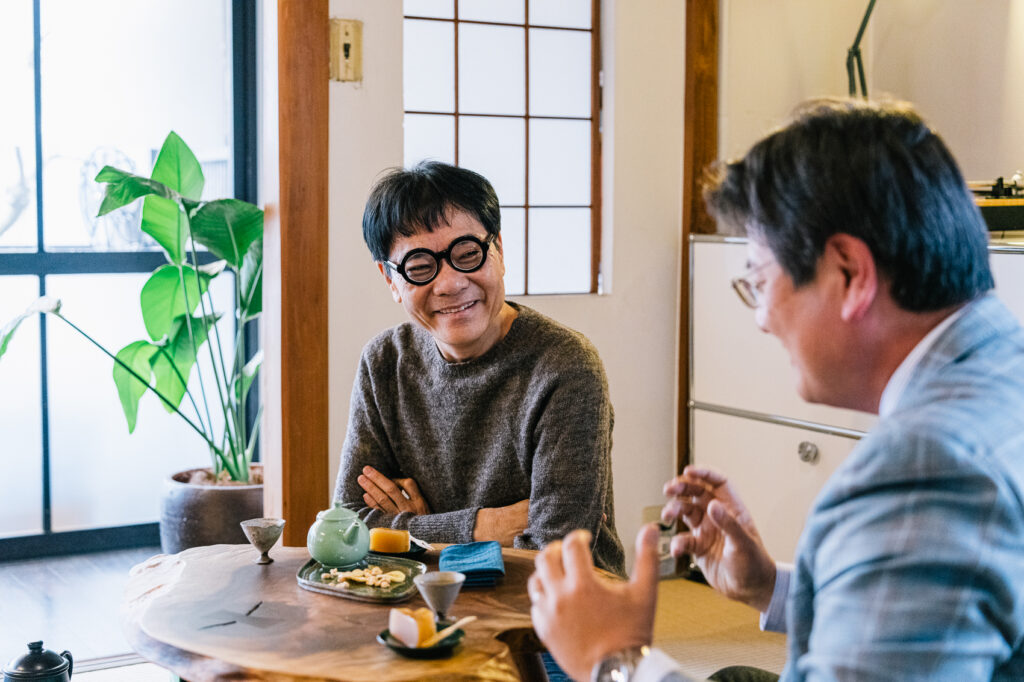
Ito: When preparing a specimen, you start by laying out the plant between sheets of newspaper and pressing it flat. When doing this, you might need to bend the stems and arrange the plant so that it fits neatly within the boundaries of the page. That requires an eye for good design, doesn’t it?
Tanaka: Visual appeal isn’t everything though. We also need to make sure all the necessary parts of the plant are visible.
Ito: Like the reverse side of the leaves.
Tanaka: Both sides of the leaves, yes. But more importantly, those leaves shouldn’t overlap with and hide the plant’s most distinguishing feature—the flower. So we collect, press, dry, and mount the specimen. A good specimen will present all the information needed by the researchers. This outcome is all that counts.
Ito: Then, what about botanical illustrations? If you make the perfect specimen, do you still need to sketch the plant?
Tanaka: When you look at Makino’s Flora, you find notes explaining things like the shape of the bulb and the length of the leaves. Those notes are called descriptions. A new species that hasn’t yet been described by anyone is said to be undescribed. All living things are divided into either described and already known or yet undescribed.
Ito: So that’s the top priority.
Tanaka: Dr. Makino traveled up and down Japan on foot gathering specimens and identifying those that already had names. When he found a plant that hadn’t yet been named, he deemed it a new species and gave it a description. But because a description relies only on words, the picture it brings to mind might vary from reader to reader. Round, for example, is ambiguous—is it a perfect circle or an oval? An illustration helps to clarify the vagueness of the verbal description.
Ito: I like to admire botanical illustrations like works of art. It’s interesting that in academia, they play a supporting role for the descriptions. In any case, sketching requires talent, and an incredibly talented illustrator was Tomitaro Makino.
Tanaka: Yes, Dr. Makino was a natural-born artist. Between the Bakumatsu and Meiji periods in the late 19th century, in a time of transition from shogunate rule to modernization, Japanese botanists were vying to catch up with and surpass their peers from the West, and Tomitaro Makino easily surpassed them in the blink of an eye.
Ito: I found a book on social dance in Dr. Makino’s study. The pages were marked with his notes on the steps. That’s impressive, isn’t it? To think that on top of conducting his research, he practiced dancing too.
Tanaka: Tomitaro Makino lived a life full of fun and games. For him, even his research was a hobby. Those of us today could take a lesson from his lifestyle. It proves that given all the time in the world, a genius can accomplish so much.
Ito: You’ve inherited Dr. Makino’s playfulness too, you know. You’re always wearing a necktie with a cool botanical pattern.
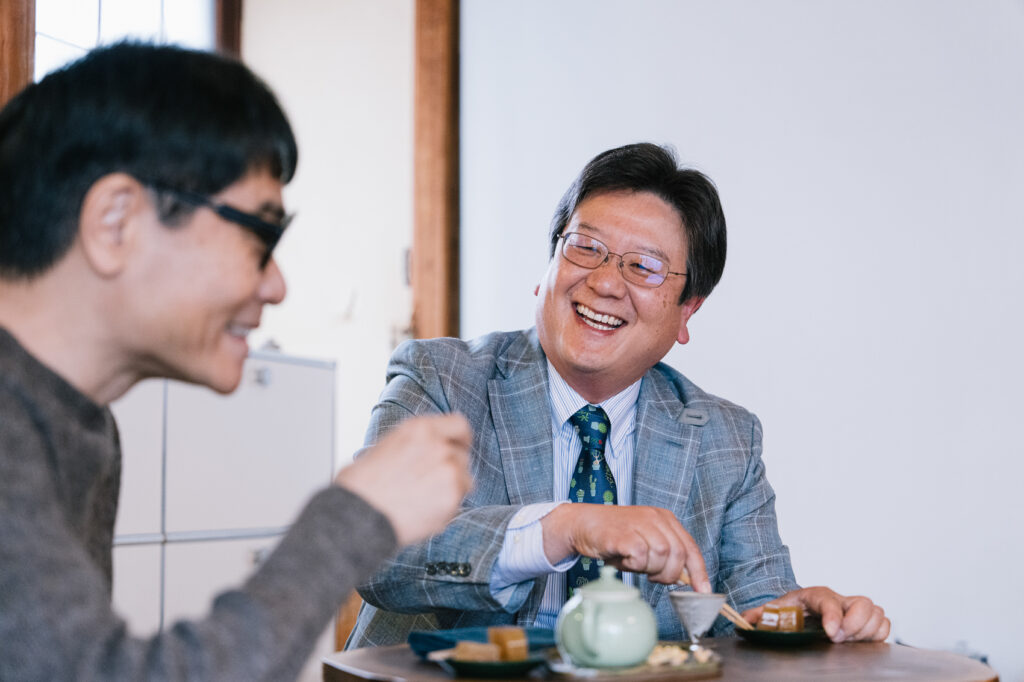
Tanaka: The theme of my necktie today is “cactarium.”
Ito: I love it! I need to get one of those too. Speaking of cacti, Yoshio Satonaka, the character I play in Ranman, is always carry a cactus. He’s modeled on Yoshio Tanaka, a celebrated expert in natural history. I heard that the idea of him carrying that cactus didn’t come from the scriptwriter, Ikue Osada, but that it came from you. Is that true?
Tanaka: Well, it hadn’t been decided which plant he was going to carry. Yoshio Tanaka brought all kinds of plants into Japan. Moonflowers, Dalmatian chrysanthemums, and cacti—he came back from the Paris Exposition carrying all kinds of cacti.
Ito: The cactus Yoshio Satonaka was carrying in his first scene was a vine cactus, wasn’t it?
Tanaka: That was the same species that Yoshio Tanaka actually brought back from Paris. The Japanese nickname, himo-saboten, is roughly equivalent to “vine cactus” in English. The problem is that it covers all climbing and trailing cacti. I had to do some digging to pinpoint the exact species. And once I had tracked it down, I barely managed to find one that big—a vine cactus of that size is rare, you know.
Ito: I had no idea your job demanded so much.
Tanaka: The main character is modeled on Tomitaro Makino, and Yoshio Tanaka is an esteemed figure too. I feel it’s my duty as technical advisor to make sure the details conform as closely as possible to historical fact. You know the books lining the shelves of the Botanical Office? I did some research and made a list of books that must have been read by botanists of that era, and asked the prop designer to reproduce each one. The actual titles aren’t really visible on air, but still.
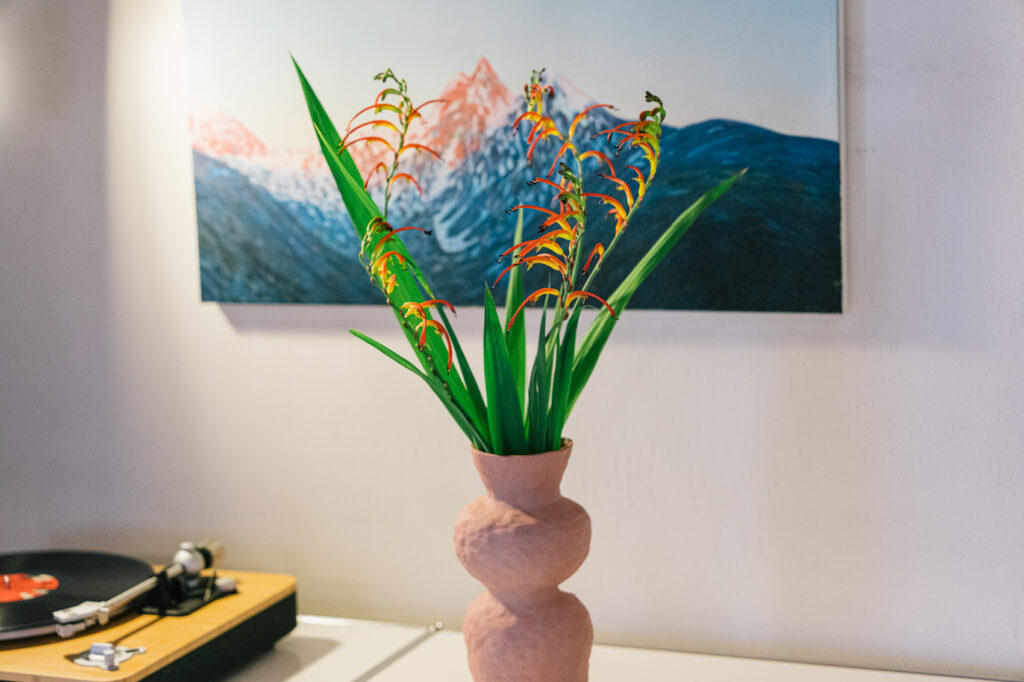
Ito: In the midst of the hectic filming schedule, you left for two weeks in March to do a field survey in Myanmar. Do you plan to continue studying the flora of Southeast Asia for some time?
Tanaka: I’d like to, yes. So much about the region is unknown to us today, just as a lot about Japan was unknown in Dr. Makino’s era. In the case of Japan, the first researchers to study our flora came from the West, and they took all of the specimens they collected back to their home countries, leaving nothing behind for the Japanese to work with.
Ito: No wonder Dr. Makino and his peers had to gather their own specimens from scratch.
Tanaka: When my team goes to Southeast Asia, we collect duplicate specimens and leave them in the care of the local team. Dr. Makino also collected multiple specimens. It’s very important to share your specimens and make sure the local researchers can conduct their own studies later on. Right now, we’re also helping them build an herbarium in Myanmar.
Ito: Collecting and preserving specimens—though in a different era and region, you’re doing the exact same work as Dr. Makino.
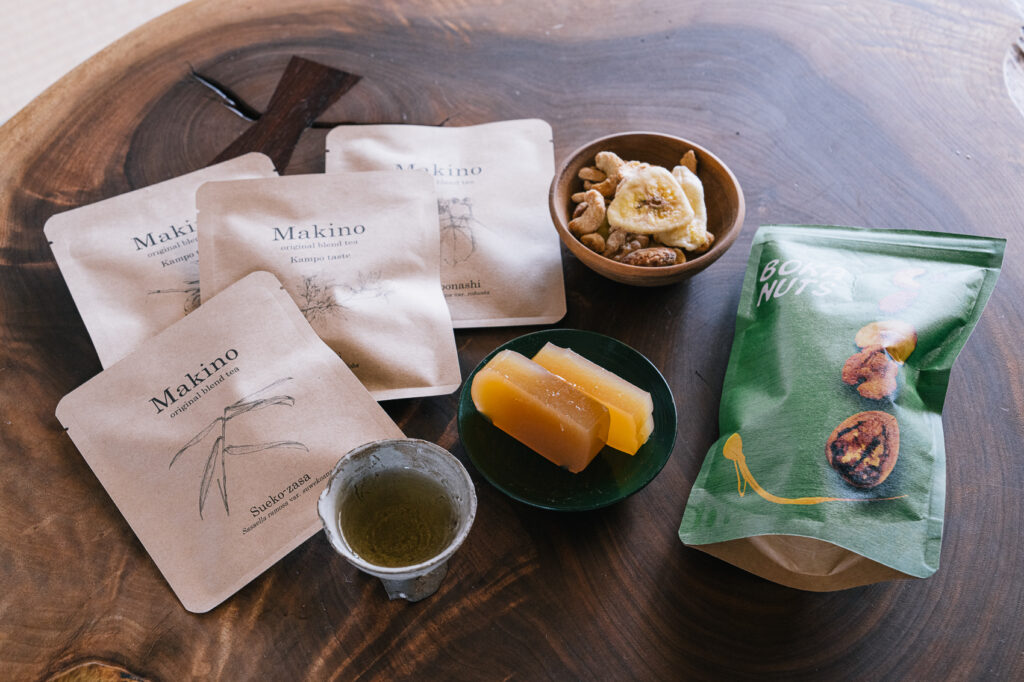
Japanese Fika Table
Tea | Makino original blend tea by Makino Botanical Garden × tretre
This tea is a blend of plants growing in the valley of the Niyodogawa River in Kochi Prefecture. Of the seven blends produced, our host and guest selected Sueko-zasa, named after Tomitaro Makino’s wife, Sue.
Sweet | Boka nuts by Kamikashimori & Lily yokan by Kikusuido
Boka nuts are roasted nuts coated with boka, a syrup made with sugarcane grown in Kochi Prefecture. Kikusuido is an established wagashi store in Kochi City that offers Dr. Makino’s favorite sweet yokan jelly desserts.
Flower | A landscape of wildflowers in homage to Dr. Makino
Chasmanthe bicolor is a perennial plant of the family Iridaceae endemic to South Africa. The flower looks like the canna lily studied by Tanaka-san. Presented here in a modern earthenware pot created by a Swedish potter.
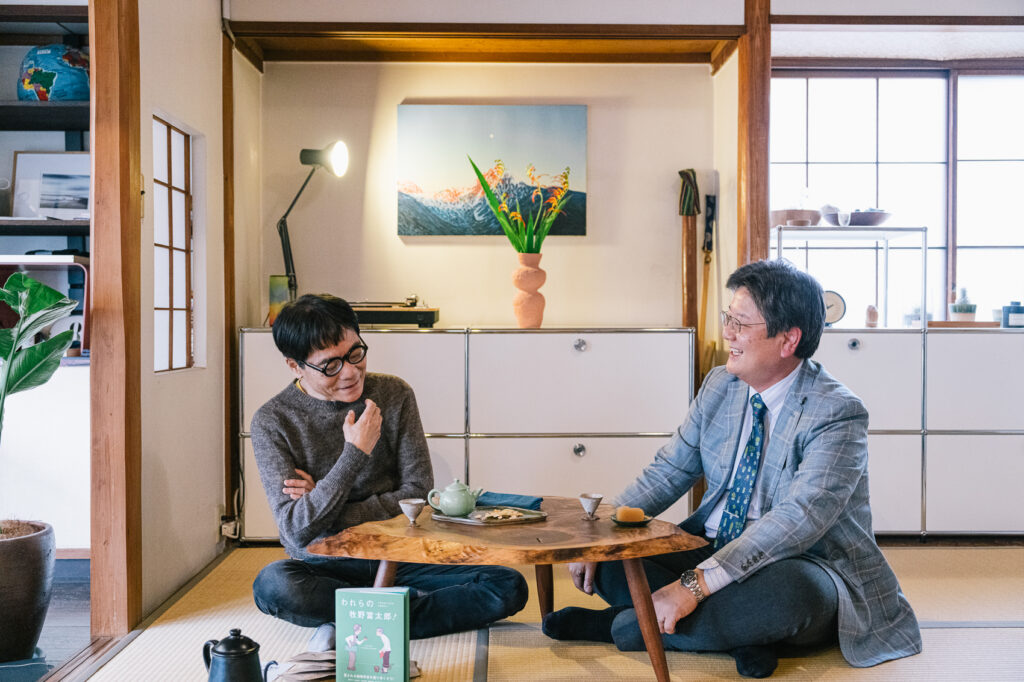
Nobuyuki Tanaka, Botanist
Nobuyuki Tanaka was born in 1971 in Tokyo. After completing a doctoral program at the Graduate School of Science, Tokyo Metropolitan University, he served as a researcher at the Kochi Prefectural Makino Botanical Garden from 2000 to 2015, among other positions. Tanaka is currently head of the Division of Land Plants, Department of Botany, National Museum of Nature and Science, and specializes in studying the diversity of plant species in Southeast Asia.
www.kahaku.go.jp
* Two new books on Tomitaro Makino recommended by Seiko Ito—he insists you must buy both of them together!—Warera no Makino Tomitaro! (Our Beloved Tomitaro Makino!; Mainichi Shimbun Publishing), overseen by Seiko Ito as technical advisor, and Makino Tomitaro no shokubutsugaku (The Botany of Tomitaro Makino; NHK Publishing) by Nobuyuki Tanaka.
Seiko Ito
Born 1961 in Tokyo, Seiko Ito is an author and creator who works in a spectrum of expressive genres including literature, film, stage, music, and online platforms. His latest publications include Warera no Makino Tomitaro!(Our Beloved Tomitaro Makino!; Mainichi Shimbun Publishing) and Ima sugu shiritai Nihon no denryoku: Asu wa kocchi da (Electric Power in Japan: Quick Guide to Tomorrow; Tokyo Kirara). As an actor, Ito portrays Yoshio Satonaka, a botanist idolized by the main character in the currently airing NHK TV drama series Ranman.











